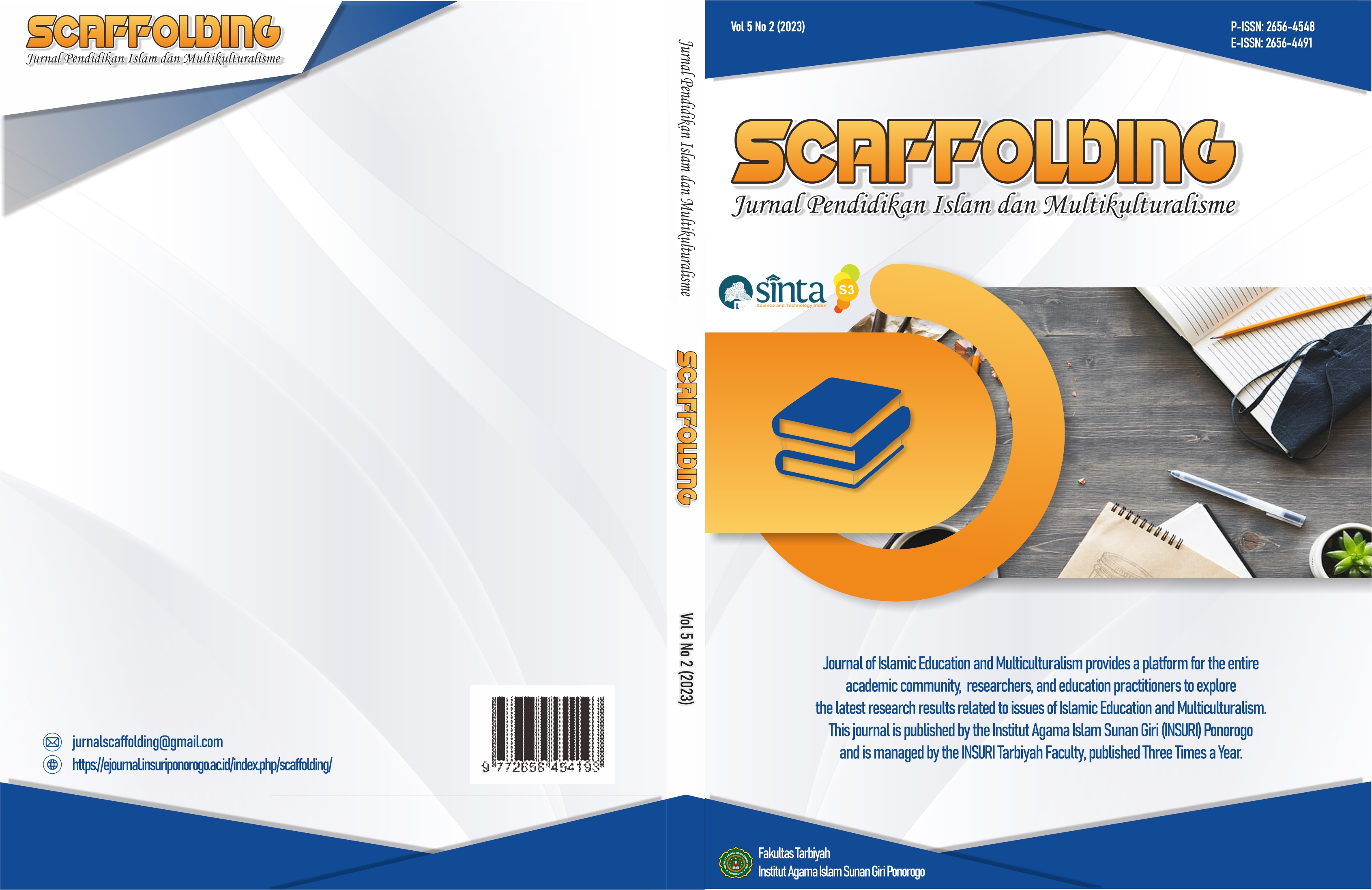Independent Curriculum on Al-Islam and Kemuhammadiyahan Subjects in High Schools
DOI:
https://doi.org/10.37680/scaffolding.v5i2.3144Keywords:
Independent curriculum; Islamic education; SMA Muhammadiyah 2 Sidoarjo.Abstract
This study aims to analyze the implementation of the independent curriculum in Al-Islam and Kemuhammadiyahan subjects at Muhammadiyah 2 Sidoarjo High School. This type of research is qualitative, with a case study approach carried out at SMA Muhammadiyah 2 Sidoarjo. The research data is in the form of teaching modules for Al-Islam and Kemuhammadiyahan subjects. Sources of data were obtained from teachers, students, and vice curricula. Observation, interviews, and documentation carry out data collection techniques. Data analysis was done by data reduction, presentation, and conclusion. Implementing the independent curriculum in Al-Islam and Kemuhammadiyahan subjects differs from the 2013 curriculum in planning, implementing, and assessing learning activities. As in the Al-Islam and Kemuhammadiyahan learning plan, which uses teaching modules, Al-Islam and Kemuhammadiyahan lesson hours are set annually so that the time allocation for reaching them is flexible. In implementing the lesson, apply diagnostic assessment, differentiation approach, and strengthen the profile of Pancasila students. As well as in the learning assessment, which focuses on formative assessment. The implementation of the independent curriculum in the subject of al-Islam and Muhammadiyah is by the provisions of the independent learning curriculum. However, the success of an education system concept depends on the teacher's application in his learning, and the success of implementing the independent curriculum in Al-Islam and Kemuhammadiyahan subjects also requires support from children as active learners.
Downloads
Published
How to Cite
Issue
Section
License
Authors who publish with this journal agree to the following terms:
Authors retain copyright and grant the journal right of first publication with the work simultaneously licensed under a Creative Commons Attribution-NonCommercial 4.0 International License that allows others to share the work with an acknowledgement of the work's authorship and initial publication in this journal.
Authors are able to enter into separate, additional contractual arrangements for the non-exclusive distribution of the journal's published version of the work (e.g., post it to an institutional repository or publish it in a book), with an acknowledgement of its initial publication in this journal.
Authors are permitted and encouraged to post their work online (e.g., in institutional repositories or on their website) prior to and during the submission process, as it can lead to productive exchanges, as well as earlier and greater citation of published work.



